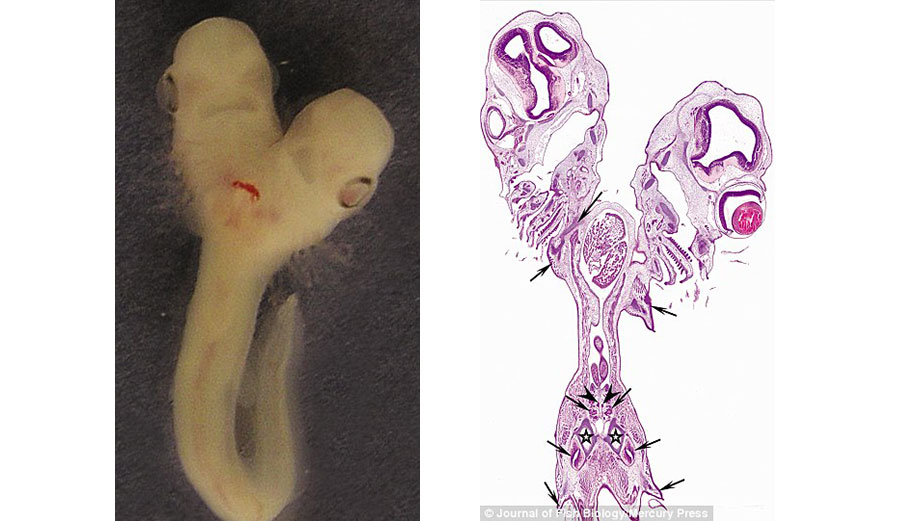
Two-headed sharks are on the rise, and researchers have no idea why. Photo: Florida Keys Community College
Back in 2008, researchers noticed something very puzzling. Numbers of two-headed sharks were skyrocketing. Although two-headed sharks are already pretty strange, a spike in their numbers was even stranger.
The puzzling trend started when a fisherman named Christian Johnson caught a two-headed blue shark embryo off the coast of Australia. While blue sharks are known to produce more two-headed offspring than other sharks–they carry up to 50 baby sharks in the womb–researchers began to notice a trend. The condition is known as bicephaly or dicephaly, and although it’s unknown exactly how long two-headed sharks live for in the wild, it’s thought that most of them die after a few months.
There’s been some pretty interesting research into animals with two heads. It’s thought that many of them are disoriented as both brains tell the body to do different things. In snakes, one head will often try and eat the other.
In another instance of a two-headed shark, a group of fisherman pulled in a bull shark in Florida. When they gutted it, they found a two-headed fetus inside. Then, Spanish researchers who were raising sharks for research into human health found a two-headed Atlantic sawtail catshark while studying their eggs.

The Atlantic sawtail that researchers recently discovered.
The reason behind the rise in two-headed sharks is still a mystery, but scientists have a few theories, all of which blame humans in one way or another.
Over-fishing is the first and most likely. Despite what you may’ve read, especially on surfing websites, there is very clear evidence that shark numbers are dwindling. When that happens, the gene pool shrinks, and the rate of inbreeding increases. Inbreeding, of course, can cause various birth defects.
Other possible causes might be viral infections or pollution, but the chances of actually figuring out what’s causing the rise in bicephaly are slim. Despite the increase, it’s still rare to catch a two-headed shark, making the occurrence difficult to study.


